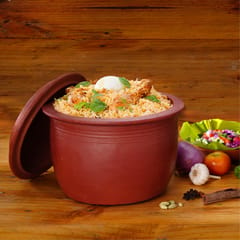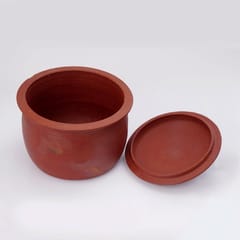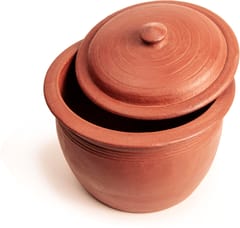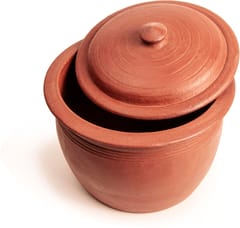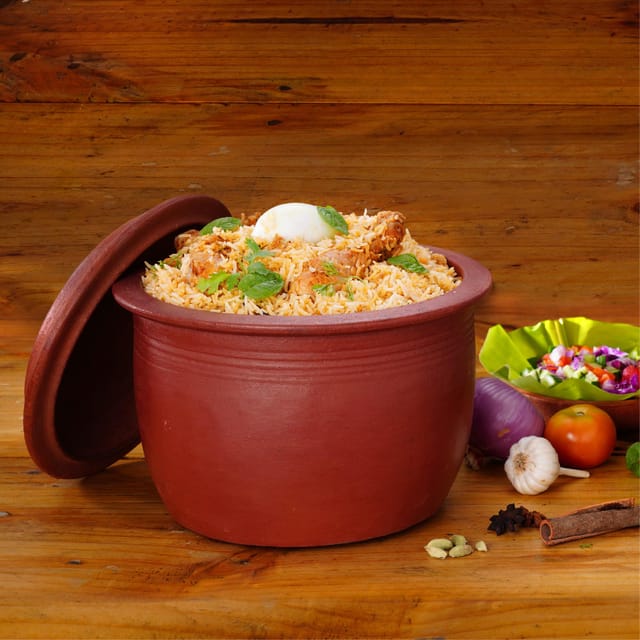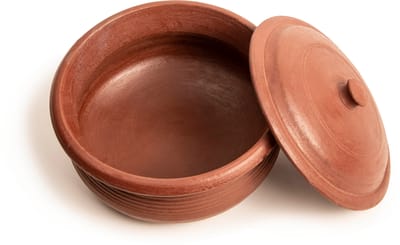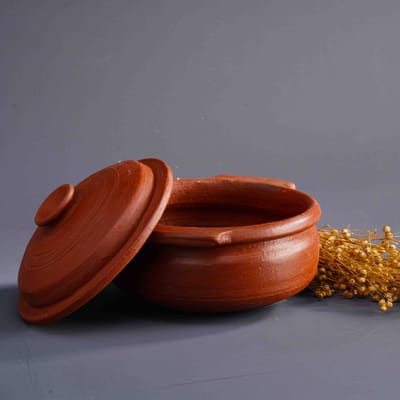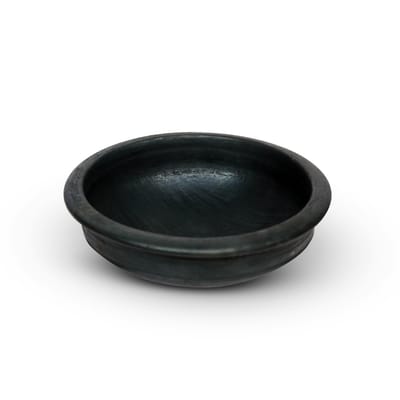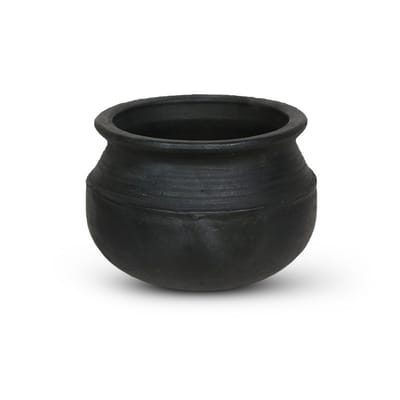Show cart summary 0 Items
Please Add Some Items
Generally, Biriyani is prepared in copper or aluminium pots and it is observed that if kept for long biriyani loses its colour. However, when biriyani is prepared in a clay pot as it a slow cooking process and heat is maintained for a longer duration, there will not be any change in colour, aroma, and taste for an extended period of time. Moreover, when cooked in a clay pot the rice will not become sticky and you will get the perfect biriyani with smooth consistency. And it takes lesser time to cook too. So, the next time you prepare biriyani, make sure that you use a Clay Biriyani Pot.
Benefits :
- This pot is made of fresh and natural clay locally available in the Palakkad region. No chemical is applied to make it smooth or shiny. It has all the goodness of the clay pots used by our grannies. So, it is a safe and healthy choice for all of us.
- Clay is somewhat porous so heat and moisture circulate through the pot, unlike metal & enamel pots therefore it is perfect for slow cooking without overheating. This helps to retain all the natural vitamins and minerals of the food. Clay pots add many essential nutrients like calcium, phosphorus, iron, magnesium and sulphur to food.
- Clay is Alkaline in nature neutralizes acidic food. Hence, clay helps in maintaining a healthy pH balance in the body and reduces common stomach problems faced by youngsters due to excessive consumption of fast food.
- Compatible with gas stoves, microwave ovens & traditional chulhas.
- Retains heat for a longer period. Thus keeping your food warm for a longer duration avoiding repetitive re-heating.
How to Clean:
For general and deep cleaning, allow the earthen pot to soak overnight in the sink in water mixed with baking soda. Add 3 tablespoons of baking soda per liter of hot water. Wash the pot with a soft bristle brush or nonmetallic scrubbing pad. Do not use abrasive scouring powders because they will clog the pores and make the pot useless. Salt or ash can be used as a non-toxic alternative to chemical cleaners. Sprinkle salt/ash into the pot and scour it using a scouring pad. Rinse the pot with warm water and allow it to dry.
If any mold forms during storage periods sprinkle baking soda inside the pot, then rinse with warm water using a brush to remove the mold. If clay pores become clogged, the pot should be cooked in boiling water for about 30 minutes.
Never use soap or detergent because the porous nature of clay will absorb the soap. The detergent may leave an unpleasant soapy taste and this flavor will leach back into your next clay pot meal.
Storage:
After washing, make sure to store your earthenware in dry and well-ventilated areas. This will eliminate the risk of mold growth inside the pot.
If bacterial growth is of concern, dry the pots in Sun light or dry pots in a 200°F oven for 30 minutes before storing in a cool, dry place.
SKU-SJWARXRAKH7KZ- Home
- Mudpot
- Cooking pots
- Biriyani Clay Pot with Lid
Biriyani Clay Pot with Lid
- 1. 100% handmade product and eco-friendly.
- 2. This pot can be used to cook biriyani, ghee rice, curry and non-veg.
- 3. Retains heat for a longer period. Thus keeping your food warm for a longer duration avoiding repetitive re-heating.
- 4. Alkaline nature of clay neutralizes the acidity of the food and maintains the pH balance.
- 5. The porous nature of clay pot retains the moisture and aroma.
- 6. It's seasoned, so you don’t have to worry about any pre-processing.
| VARIANT | SELLER | PRICE | QUANTITY |
|---|
Description of product
Generally, Biriyani is prepared in copper or aluminium pots and it is observed that if kept for long biriyani loses its colour. However, when biriyani is prepared in a clay pot as it a slow cooking process and heat is maintained for a longer duration, there will not be any change in colour, aroma, and taste for an extended period of time. Moreover, when cooked in a clay pot the rice will not become sticky and you will get the perfect biriyani with smooth consistency. And it takes lesser time to cook too. So, the next time you prepare biriyani, make sure that you use a Clay Biriyani Pot.
Benefits :
- This pot is made of fresh and natural clay locally available in the Palakkad region. No chemical is applied to make it smooth or shiny. It has all the goodness of the clay pots used by our grannies. So, it is a safe and healthy choice for all of us.
- Clay is somewhat porous so heat and moisture circulate through the pot, unlike metal & enamel pots therefore it is perfect for slow cooking without overheating. This helps to retain all the natural vitamins and minerals of the food. Clay pots add many essential nutrients like calcium, phosphorus, iron, magnesium and sulphur to food.
- Clay is Alkaline in nature neutralizes acidic food. Hence, clay helps in maintaining a healthy pH balance in the body and reduces common stomach problems faced by youngsters due to excessive consumption of fast food.
- Compatible with gas stoves, microwave ovens & traditional chulhas.
- Retains heat for a longer period. Thus keeping your food warm for a longer duration avoiding repetitive re-heating.
How to Clean:
For general and deep cleaning, allow the earthen pot to soak overnight in the sink in water mixed with baking soda. Add 3 tablespoons of baking soda per liter of hot water. Wash the pot with a soft bristle brush or nonmetallic scrubbing pad. Do not use abrasive scouring powders because they will clog the pores and make the pot useless. Salt or ash can be used as a non-toxic alternative to chemical cleaners. Sprinkle salt/ash into the pot and scour it using a scouring pad. Rinse the pot with warm water and allow it to dry.
If any mold forms during storage periods sprinkle baking soda inside the pot, then rinse with warm water using a brush to remove the mold. If clay pores become clogged, the pot should be cooked in boiling water for about 30 minutes.
Never use soap or detergent because the porous nature of clay will absorb the soap. The detergent may leave an unpleasant soapy taste and this flavor will leach back into your next clay pot meal.
Storage:
After washing, make sure to store your earthenware in dry and well-ventilated areas. This will eliminate the risk of mold growth inside the pot.
If bacterial growth is of concern, dry the pots in Sun light or dry pots in a 200°F oven for 30 minutes before storing in a cool, dry place.

